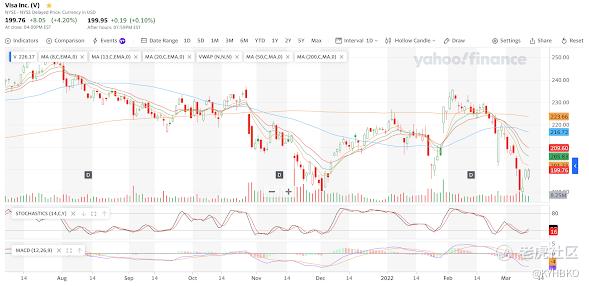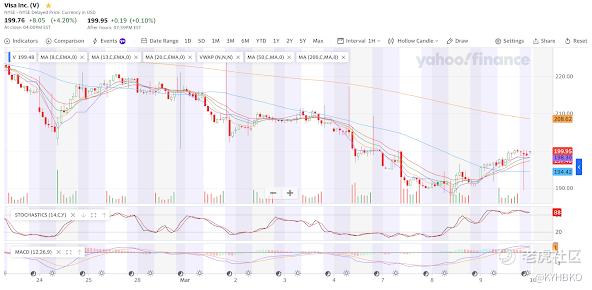How I TRY TO manage my emotions for trading using VISA as an example
The biggest struggle I have when I trade is my emotions. There would be constant temptations coming from the fear of missing out (FOMO).
Note that there is a difference between trading and investing. Investing.com has a great explanation of the difference:
- Investing takes a long-term approach to the markets and often applies to such purposes as retirement accounts.
- Trading involves short-term strategies to maximize returns daily, monthly, or quarterly.
- Investors are more likely to ride out short-term losses, while traders will attempt to make transactions that can help them profit quickly from fluctuating markets.
With the above definitions, I would like to share how I (try to) manage my emotions coming to my trade (not investment).
When I was a younger trader, I rely largely on technical to trade. Being aware of my weakness, I started to develop a process for me to better manage my emotions.
My Trading setup
My trade setup will be using 2 charts- 1 Day chart as the anchor chart and 1 Hour chart as the entry chart. The anchor chart is where we look for the trend or reversal of the current trend. Honestly, the longer the time frame, the better is the accuracy of our charts - with lesser false signals and noises.
Set up with VISA $V as an example:
I would first go to my excel spreadsheet and enter the info about 1D (stochastic and MACD trend) followed by that for 1H. This is key as I would see in front of me whether my trade set-up is in the proper position. This helped me greatly and I could (sometimes) back off after entering the info, making effort for logic to step in instead of emotions.

After this, I will then alternate between the 1 Day (1D) chart and 1 Hour (1H) chart to execute my trade (if the set-up is in my favour - where both Stochastic and MACD for 1 D chart has bottomed up).

From the 1 Day chart above, if I am more aggressive, I will use the cross-over at the Stochastic as a signal to buy. However, my experience has shown that the MACD chart works better as it is prudent - with fewer false signals but it is slower to react compared to Stochastic. For this example, I "choose" to use a stochastic chart as my reference for the buy signal over MACD. With this, I will then drill into the 1 Hour chart to ascertain my entry point.

From the 1 Hour chart above, we see both Stochastic and MACD at the top with cross-over (usually a "sell" signal). Understand it is possible for MACD/Stochastic charts to "range along the top" over extended periods of time - a persistent climb. Ideally, I would wait for the stochastic to bottom-up and form a cross-over starting an upward climb. This would be my signal to entry. However, it is important that the bottoming of the 1 Hour chart is not a lower price as compared to the most recent low (of $187 range). If the price drops lower than the previous low ($187 range), a downward trend may continue. In this case, the trade is abandoned.
For shorter time frame trades, I may set up using a 1 Hour chart as the anchor chart and a 5 or 10 minutes chart for entry. For longer trades, I may set up using a 1-week chart as the anchor chart and 1 Day chart for entry.
The effort to enter our assessment of the indicators can help us to avoid entering a trade, based on emotions and force us to rationalize the trade. Over time, I still make emotional trades but at a much lesser frequency.
Hopefully, this can help us to trade better. I am also looking more into long term investments over trading.
Personal preferences for set up
Personally, I choose the "slow stochastic" for setup over the regular stochastic. Should I feel "aggressive", I would use the stochastic indicator for my trade signal but MACD is the better and more prudent one thus far. I have "avoided" a few heartaches because I chose to follow MACD. In these cases, I managed to enter at better prices following the double bottoms pattern.
Such a setup cannot be used for stocks with strong rallies where prices keep going up for hours.
Disclaimer: Investing carries risk. This is not financial advice. The above content should not be regarded as an offer, recommendation, or solicitation on acquiring or disposing of any financial products, any associated discussions, comments, or posts by author or other users should not be considered as such either. It is solely for general information purpose only, which does not consider your own investment objectives, financial situations or needs. TTM assumes no responsibility or warranty for the accuracy and completeness of the information, investors should do their own research and may seek professional advice before investing.

This technical short term “gambling” is good tool